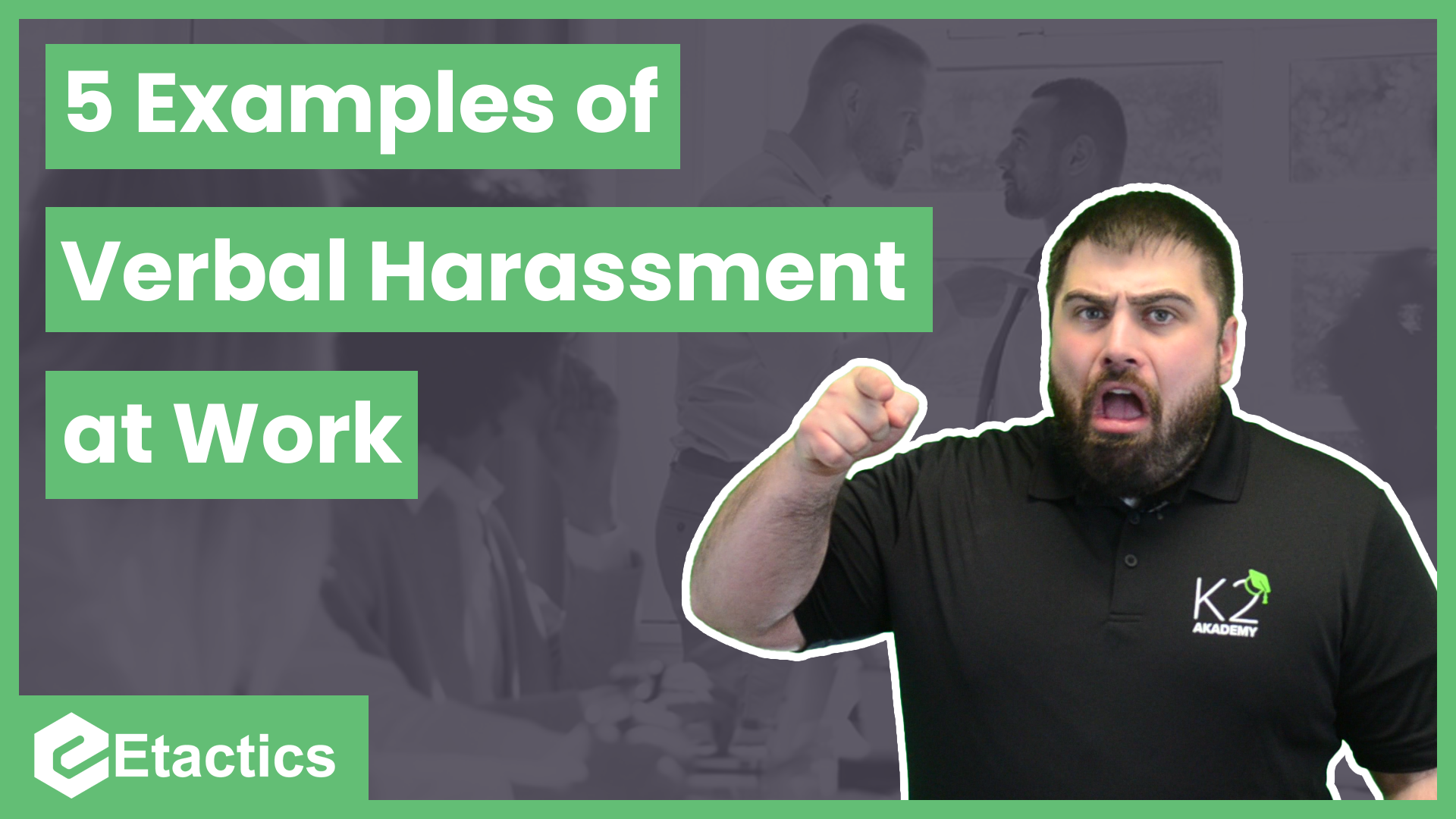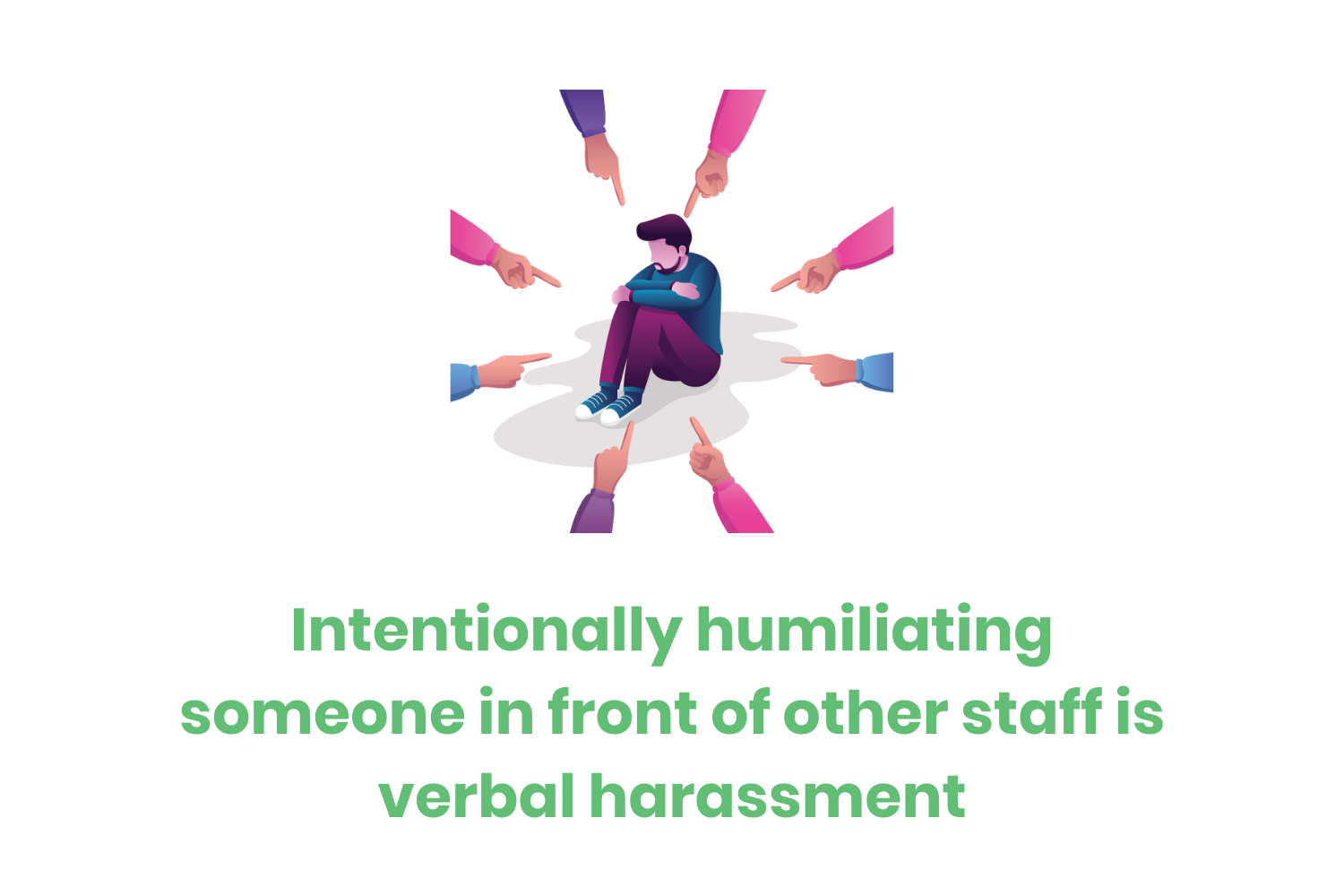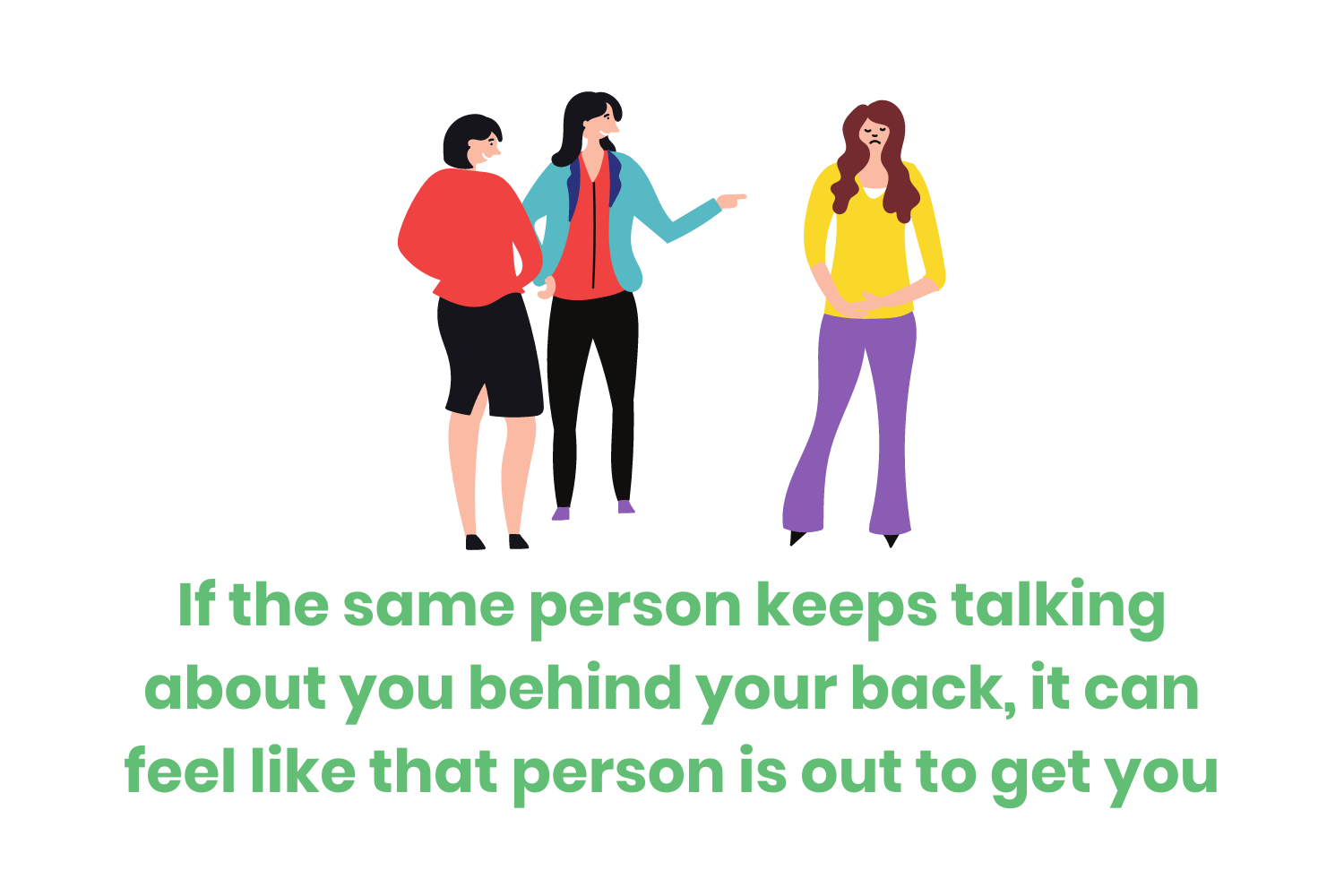According to the Hiscox Workplace Harassment Study, 35% of employees feel that they’ve experienced harassment. This figure is even higher for women as 41% say that they were victims.
That same study found that 78% of people said their harassers were men, and 73% said they were in a senior position. This makes it easy for people to stereotype a common profile for harassers. However, they can be of any gender and have any position of power in the office.
Often, this workplace harassment takes the form of verbal abuse. Certain comments and remarks that staff make to each other can be offensive, inappropriate, and insulting. The problem is that some people think this behavior is acceptable or they don’t realize it qualifies as harassment. In fact, 16% of people don’t know what constitutes sexual harassment.
For example, a YouGov poll conducted in 2014 asked the following question:
“Do you think it is ever appropriate to make a catcall, which can be making a whistle, shout, or comment of a sexual nature to someone passing by?”
The results found that…
72% of all surveyed individuals found it never appropriate
18% said it was sometimes appropriate
2% said it was always appropriate
Only 55% of respondents believed that these catcalls were harassment, and 20% that the verbal behavior was a compliment.
Because there are different opinions of what qualifies as inappropriate behavior, it’s important to understand how verbal harassment can occur at the workplace.
Verbal harassment is often defined as “language directed at another person that causes that person harm, typically in an emotional or psychological sense.”
Most people generally agree that it is not just language. This form of harassment can also include other sounds, such as whistling or mimicking animal noises, made to cause emotional harm.
With this definition in mind, here are some examples of verbal harassment in the workplace.
Table of Contents
What is Workplace Harassment
Workplace Harassment and discrimination involves the unwelcome conduct directed at someone because of their sex, religion , age, disability, sexual orientation, or other protected characteristics. These behaviors often create a hostile, intimidating, or offensive work environment. It is important to understand that harassment doesn't need to be physical, verbal and emotional actions can be just as damaging.
There are several forms of workplace harassment. While verbal harassment is often the first that comes to mind, its not the only one. Before we jump into the types of verbal harassment, lets briefly go over the different types of harassment employees may encounter:
Sexual Harassment
Sexual harassment includes any unwelcome sexual advances ,comments ,gestures, or behavior of a sexual nature or comments towards a coworker.
Physical Harassment
Any unwanted physical contact like touching, blocking movement, or physical intimidation will be considered physical harassment.
Visual Harassment
Visual Harassment includes displaying inappropriate or offensive images, drawings, or gestures that create a hostile environment.
Digital Harassment
Harassing messages, inappropriate emails, or offensive behavior through any workplace communication platform.
Types of Verbal Harassment in the Workplace
Verbal harassment is an umbrella term that covers all kinds of harmful spoken behaviors a coworker may face. This will include offensive comments, jokes, name-calling, and more.
Inappropriate Jokes
Like I mentioned before, some people don’t realize that some language qualifies as harassment. This includes jokes. In fact, 32% of people are unaware that jokes can be sexual harassment.
Because not everyone knows that certain jokes are inappropriate for the workplace, they may end up defending themselves after an insulting remark. Perhaps you’ve heard someone at work say one of the following lines, or you’ve said them yourself…
“It was just a joke!”
“I wasn’t being serious.”
“You take things too seriously.”
“I’m only kidding.”
Each of these is a way that people try to lighten the mood for something that they shouldn’t have said to begin with. Typically, they’ll defend themselves in this way after realizing that the comment was offensive instead of owning up to the inappropriate behavior.
Even if someone claims it was 'just a joke', it can still be considered harassment if it offends or targets someone unfairly. But employees who make these comments still need to own up to their mistakes when they recognize that they were out of line. This helps correct the situation if they admit to and apologize for the inappropriate comments.
And other times, jokes are an attempt to conceal mean-spirited comments or opinions. Some employees may have malicious intentions with their remarks but try to disguise it as a joke so it seems less harmful. But really, it still hurts the person they’re harassing.
This type of verbal harassment can even become illegal in some cases. For instance, jokes become illicit if management tells an employee that they have to put up with the offensive comments to stay employed. It’s also illegal if the situation is pervasive enough that a reasonable person would consider the situation intimidating, hostile, or abusive.
Spreading Lies
Spreading lies, in general, can cause emotional harm to the victim involved. It can also become illegal if it qualifies as defamation which damages someone’s reputation.
According to the Merriam-Webster dictionary, defamation is “the act of communicating false statements about a person that injure the reputation of that person.” It’s also known as character assassination, libel, slander, smearing, or vilification.
For instance, someone may lie about how a person received a promotion or a raise. Depending on the details of the lie, this could seriously harm the victim’s reputation. And if enough people believe that it’s true, it can negatively impact that person’s career such as through a demotion or even termination.
Because of the negative outcomes that it can have for the victims, many of them have filed lawsuits concerning the lies and rumors spread about them.
Racial Slurs
Many words cause significant pain when directed at minorities. Because of their severity, we won’t spell them all out for you. But they’re so common that you probably know what they are. Common examples include:
The N-word when directed toward individuals of African complexion
Something referencing the color “yellow” when directed towards someone of Asian descent
“Savage” when directed towards an indigenous or First Nations person
Half-breed, mutt, “pale face”, or ape
These offensive slurs are another instance of illicit workplace language. Because of the emotional harm that they can cause to employees, it creates a hostile environment. Court systems can even deem discriminatory language illegal in the workplace.
However, different courts have their own way of dealing with these racial slurs.
Some courts recognize the N-word as one of the most offensive and taboo slurs someone could vocalize. They believe that even one use of the N-word could be enough to deem the workplace as a hostile environment.
Other courts, like the Fifth Circuit Court of Appeals, disagree by saying that one use of the N-Word, whether alone or with other racial slurs, may not be enough to create a hostile work environment.
Inappropriate Sounds
When I say “inappropriate sounds,” I don’t mean passing gas or burping while sharing a cubicle with a couple of your coworkers. Yes, it might be embarrassing for you, but you can’t always help it.
Instead, I’m referring to sounds that someone makes intentionally. There are so many different instances of these, such as whistling when someone walks by or groaning when your least favorite coworker walks into the room.
Some noises may even qualify as sexual harassment. Even if the harasser doesn’t verbalize any remarks, these inappropriate sounds create an uncomfortable and intimidating environment for the victim.
Mocking and Revealing Personal Details
Some things are better left unknown by colleagues. After all, people want to keep personal and professional life separate. But sometimes, certain information gets revealed at work.
For example, a coworker may need to disclose a health concern to their employer so they can receive approval for disability leave. Or maybe someone asks for a raise because their family is struggling financially.
Of course, personal details like these should stay private. If this information came up in conversation with others, it could be devastating and embarrassing for the person it impacts. No one would want their coworkers to look at them differently because of something within their private life.
It’s inappropriate to reveal these details about someone in general. But it’s especially offensive to discuss them in a demeaning way. Chances are that these are already sensitive topics, and mocking the person for it would just make things worse.
Inappropriate Questions
It’s okay to ask your colleagues questions such as if they enjoyed the weekend. Engaging in these conversations helps create a friendly atmosphere.
But you shouldn’t ask questions that pry into their life. Harassment may arise if these questions make someone feel singled out, uncomfortable, or judged based on their personal characteristics.
Finances
Politics
Religion
Sex
Drug/alcohol use
Disabilities
Weight
Pregnancy/family planning
Of course, some of these have a fine line between what is and isn’t appropriate. For instance, if you have concerns that someone is struggling with substance abuse, you would want them to get help. But there are ways to address concerns without putting someone on the spot in the middle of the workday. The tone you use can also be a factor in showing that you care versus accidentally humiliating them.
If you have concerns about a coworker, it’s best to approach them away from others. And if you aren’t sure what to say, you can bring your concerns to your managers so they can address the situation.
Embarrassing Someone in Front of Others
Revealing personal information and asking taboo questions are embarrassing enough. But other scenarios can be just as humiliating, even if they don’t involve personal details.
Let’s look at a situation that could realistically happen.
In this scenario, you made a typo on a flier that every customer is going to read. Your boss has a team meeting and won’t tell you what it’s about.
In the meeting, he gives everyone the flier you made and demands that you read it out loud. While reading, you find the typo and stumble over your words. You sink into your chair with humiliation as your coworkers now know the silly mistake you made.
Instead of approaching you individually to point out the mistake, your boss lectures the whole staff about the importance of how customers perceive the company. He uses you as an example of what not to do. Everyone in the meeting feels irritation towards you because the lecture interrupted their workday for a mistake that only you made. And now, they also think you aren’t as good at your job.
Hopefully, you haven’t experienced this kind of situation. Because when coworkers or management put you on the spot to publicly humiliate you in front of others, it’s a form of harassment.
Gossiping
This category is similar to spreading lies, but what makes it different is that some of the topics discussed behind your back could be true. Additionally, the perpetrator repetitively does this behavior.
Even so, no one wants others to be talking negatively about them, even if it is true. Another problem with gossiping is that facts can get warped and the context changes, making the victim of the conversation appear even worse.
Persistent gossiping can create an intimidating and abusive environment by talking poorly about coworkers. This wouldn’t be a welcoming workplace if people talk negatively about each other.
Threats
Obviously, threats of physical harm are a severe form of verbal harassment and are illegal. Any threats of violence should get reported to legal authorities.
But workplace threats typically occur differently.
For instance, managers may threaten to fire or demote an employee if they don’t meet certain goals or adhere to non-work-related requests. This would create negative pressure for employees and lead to an unhealthy workplace.
Name-Calling
While they’re both offensive, name-calling is distinctly different from racial slurs. The definition of racial slurs is “words or phrases that refer to members of racial and ethnic groups in a derogatory manner.” The purpose is to dehumanize minority ethnic groups.
Name-calling, on the other hand, is “the use of offensive names especially to win an argument or to induce rejection or condemnation (as of a person or project) without objective consideration of the facts.”
Calling someone a “Boomer” (baby boomer) to suggest that due to their age they don’t understand something is a form of name-calling. Referring to someone as a “Karen” is offensive due to the stereotype that people with this name have a self-centered attitude.
These are more modern insults, but the list of names is extensive. Just some others that you might hear around the workplace include…
Simpleton
Bum
Snob
Ignoramus
Idiot
The list goes on. And they don’t always refer to someone’s work ethic or abilities. They could also refer to an individual’s sexuality, religion, political beliefs, etc…
The F-word when directed towards a member of the LGBTQ community
Queer
Sheep
Prude
Snowflake
As times change, so do the terms used to try to demean someone. Regardless, one thing stays the same: this language is inappropriate for the workplace.
Sexual Harassment in the Workplace: What It Looks Like
Sexual harassment is the unwanted sexual behavior that affects someone's job or creates a hostile work environment. There are different forms of sexual harassment; there is verbal, nonverbal, or physical harassment and isn't always as obvious as people think.
Common Examples of Sexual Harassment
Unwanted Sexual advances
This includes a coworker repeatedly asking someone out even after being told no. It also covers unwanted touching, hugging, or getting too close, especially when tat contact cold have been easily avoided. Even if someone says they were jus "being friendly", if the behavior is unwelcome, it will be considered harassment.
Sexually explicit jokes or comments
This is the most commonly recognized form of sexual harassment. It includes the use of crude humor, sexual innuendos, or comments about someone's appearance in a way that crosses a professional boundary.
Quid pro quo
Quid pro quo harassment happens when one person offers something in exchange for sexual attention. In most cases it will be something like "if you go out with me, I'll make sure you get the promotion". This can put the victim in a difficult position, especially if they're afraid of retaliation or feel pressured to accept in order to succeed at work.
How to Respond to Verbal Harassment in the Workplace
Understanding and recognizing verbal harassment is one thing, knowing how to respond to it is a completely other thing. Whether you are the target or the bystander, it can be hard to know what to do in the moment. We are going to go over what you should do if you see or experience verbal harassment.
1.Document what happened
If you are to see or experience verbal harassment, write everything down that occured. It is vital that you include the date,time,location, what exactly happened, and if there were any witnesses. Even if you don’t plan on reporting the harassment right away, be sure to keep the notes in case the situation escalates.
2.Speak up if it's safe
If you feel comfortable, explain why the person's comment or action crossed a line. This shouldn't start an argument, just informing them that their behavior is not okay and can help form a boundary. It is important to know that if you are concerned about retaliation or don't feel safe, skip this step and go straight to reporting it.
3.Report the behavior
Almost all companies have a process for reporting harassment. In most cases it usually entails talking to your supervisor,human resources, or a designated contact. If your manager or HR is involved in the harassment report, you will need to escalate it to a higher authority or complete an external complaint.
4.Know your rights
Verbal harassment can violate company policy, but it can also break the law. Especially if it is persistent,discriminatory, or coming from someone in authority. The Equal Employment Opportunity Commission (EEOC) protects employees from workplace harassment based on race,gender,age,disability, and more. If you find your report has not been taken seriously, you can file a complaint through their website.
5.Don’t go through it alone
Harassment can take a serious toll on your overall mental health. If you are feeling overwhelmed, talk to someone you trust, like a friend,coworker, or therapist. Having support during this time makes it easier to move forward with a report, even if the situation gets more difficult.
6.If you’re a bystander, say something
If you witness someone being verbally or physically harassed, check in with the victim. If you feel safe, speak up in the moment or report what you saw occur. Sometimes having someone validate what happened was wrong can make all of the difference.
Conclusion
Unfortunately, these examples of verbal harassment in the workplace aren’t that uncommon. In fact, 45% of employees had witnessed the harassment of a coworker.
But even with close to half of people noticing this behavior, many still don’t do anything about it. There are several reasons for that…
They fear a hostile work environment
They worry they’ll experience retaliation
They don’t think management would do anything about it
They believe the harasser would start to target them
On the bright side, 51% of employees said that their company implemented anti-harassment policies between 2017 and 2018.
This is a step in the right direction, especially since not everyone understands what qualifies as harassment. By requiring this harassment prevention training, employees understand how to prevent, identify, and report hostile behaviors.















